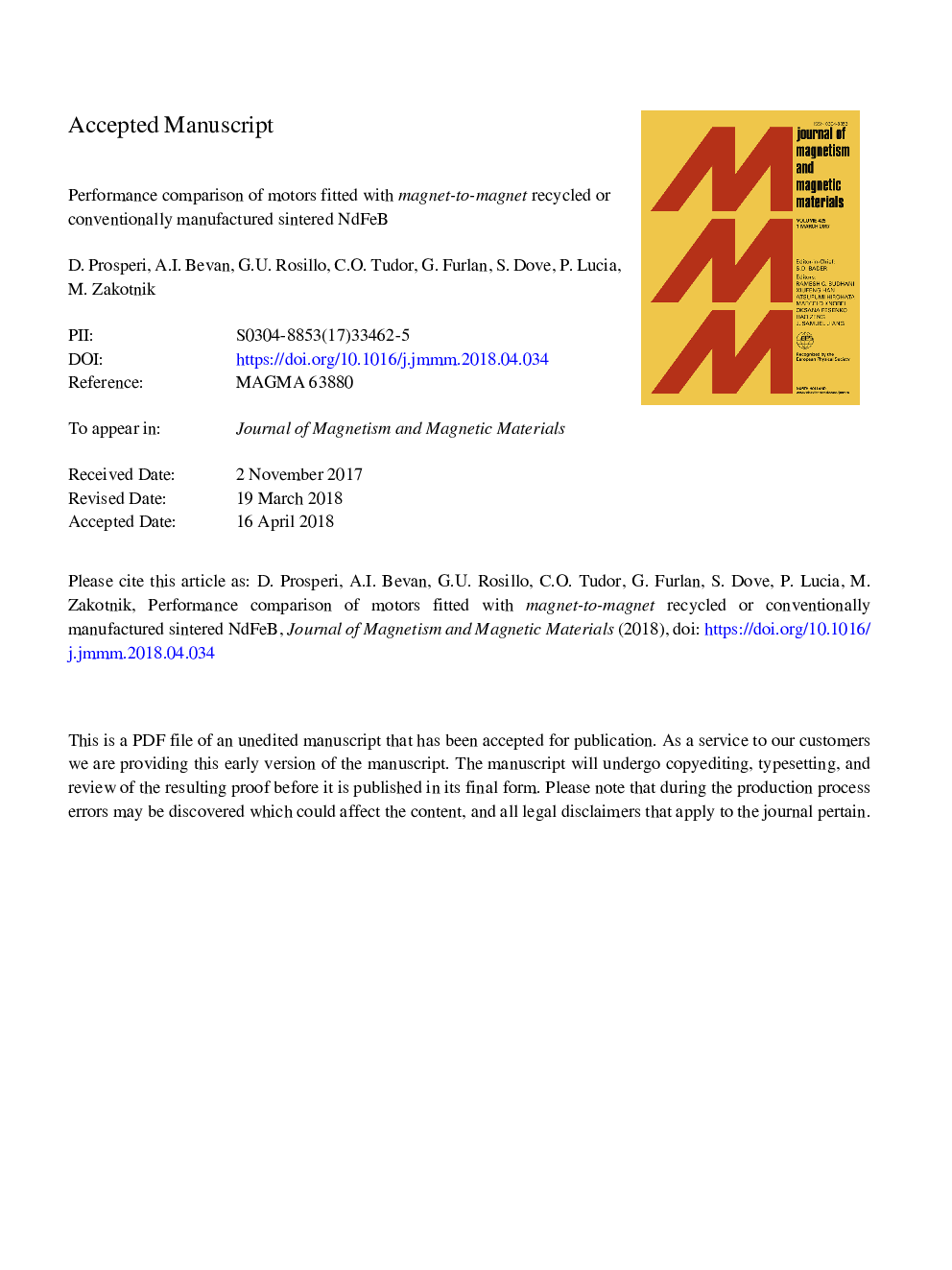| Article ID | Journal | Published Year | Pages | File Type |
|---|---|---|---|---|
| 8153088 | Journal of Magnetism and Magnetic Materials | 2018 | 17 Pages |
Abstract
Neodymium iron boron (NdFeB) based magnets have high magnetic energy densities and thus are the material of choice for motor designs in electric vehicles, where traction motors must be as small, lightweight, and efficient as possible. However, recent fluctuations in the price of rare-earth minerals have made NdFeB a far less attractive material. Recycling NdFeB magnets is one method to mitigate price fluctuations going forward. Indeed, magnet-to-magnet recycling allows the manufacture of NdFeB magnets using end-of-use waste NdFeB feedstock materials. These recycled magnets display substantially improved magnetic and physical properties compared to precursor alloys. Herein, the performance of two identical electric motors are compared; one motor powered by recycled NdFeB magnets produced via magnet-to-magnet processing, and the other powered by conventional NdFeB magnets made from virgin elements. The results demonstrate that flux linkage measured at open circuit and the torque measured at closed circuit are 7.0% and 6.4% higher, respectively, for the motor containing recycled magnets versus the motor containing conventional magnets. This was achieved despite the 15% lower Dy content of the recycled magnets as compared to conventionally produced magnets. This performance advantage demonstrates the utility of magnet-to-magnet recycled NdFeB technology in real world applications.
Related Topics
Physical Sciences and Engineering
Physics and Astronomy
Condensed Matter Physics
Authors
D. Prosperi, A.I. Bevan, G. Ugalde, C.O. Tudor, G. Furlan, S. Dove, P. Lucia, M. Zakotnik,
